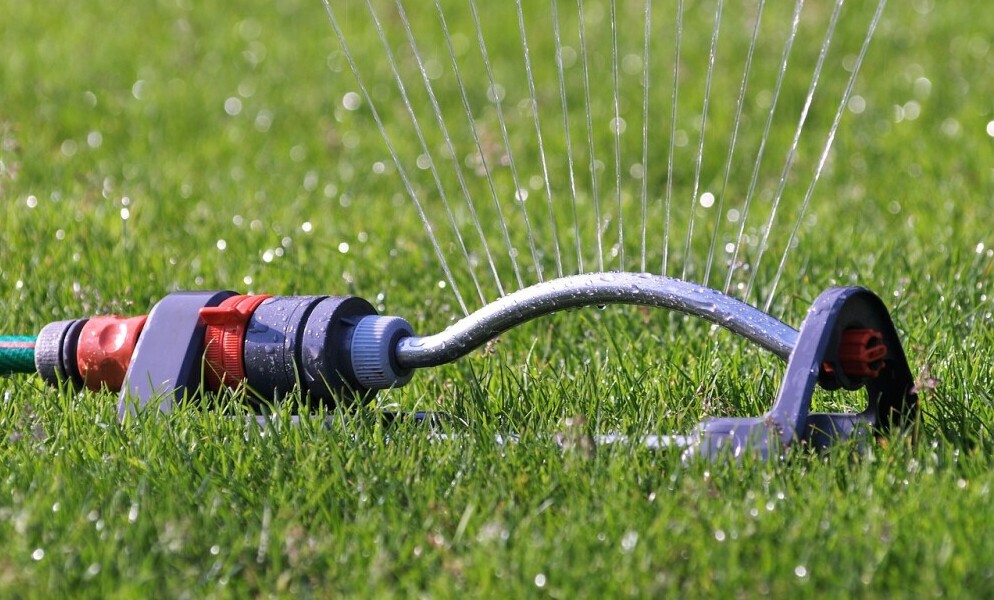How To Have A Green Lawn Without Chemicals
I cherish a lush, green lawn as much as the next person. Something about that stretch of vibrant color suggests a space well-tended and taken care of. Yet, achieving this often implores the use of heavy chemical use that can harm the environment and possibly our health. But imagine if I told you that a verdant lawn is possible without resorting to harmful measures? Achieving a green lawn is highly possible while keeping things eco-friendly.
The shift to green landscaping is gaining momentum, not just for its aesthetic appeal but also for its environmental benefits. By adopting sustainable lawn care practices, one can maintain a beautiful outdoor space while being a steward of nature. Natural methods are not only safer for humans and pets, but they also promote a healthier ecosystem in your backyard.
Here’s a little transparency: Our website contains affiliate links. This means if you click and make a purchase, we may receive a small commission. Don’t worry, there’s no extra cost to you. It’s a simple way you can support our mission to bring you quality content.”
There exists a dominant culture that without chemicals, a lawn will be overcome by weeds, pests, and diseases. However, this couldn’t be further from the truth. A chemical-free approach can yield a lawn that’s not only thriving but also more resilient. The secret? Working with nature rather than fighting it. Using organic methods to nourish and protect your lawn aligns with the delicate balance of nature.
The biggest question most lawn owners have is where do I begin? The secret is to begin with understanding the soil and what nutrients it contains to promote healthy lawn growth. It’s the bedrock of lawn care, and once you’ve got the soil right, everything else follows more effortlessly. The grass is, after all, only as good as the ground it grows in. The time to lay the groundwork for a healthy lawn starts beneath the surface.

Testing the Terrain: The First Step to a Lush Lawn
Think of your soil as the foundation of a house you are building. Just like a house needs a solid foundation, your grass requires the right soil conditions to thrive. This is why testing your soil is a logical first step in constructing your green lawn.
Testing your soil isn’t just a smart move; it’s fundamental to determining your lawn’s nutritional needs. It gives you a report card on the health of your lawn’s foundation. You’ll understand its pH level, nutrient content, and any deficiencies it might have. Skipping this step is like shooting in the dark and hoping for the best. Developing a good lawn strategy starts with getting information first, and then planning a method of attack for your lawn.
You can test your soil through local extension services or with at-home test kits which can provide immediate results. The DIY route can be both fun and informative, giving you a hands-on role in your lawn’s care. You’ll need to gather samples from several locations in your yard to get a complete picture.
Once you’ve got the results, it’s time to act. It’s not uncommon for lawns to need a pH adjustment. If it’s too acidic, you might use calcific lime to raise the pH, or sulfur to lower it if it’s too alkaline. But remember, always use organic materials that are safe for the environment.
And that’s not all. Your test might reveal that your soil is low in nutrients like nitrogen, phosphorus, or potassium (NPK). Now, that’s where organic fertilizers enter the stage. They’re about to become your lawn’s best friend – releasing nutrients slowly, improving soil structure, and stimulating natural soil life.
There’s a nifty trick I’d like to share. It involves teamwork between natural nutrient cycling and organic matter. Composting and using organic mulches not only feed your lawn but also boost the beneficial microorganisms in your soil. That leads us right into organic fertilizers and how they can be the ingredients you need the most.
Nourishing with Nature: Organic Fertilizers and Their Benefits
You understand that nutritious soil is the bedrock of a thriving, green lawn. That’s where organic fertilizers come into their own. So, why should you pick them over the synthetic stuff? The answer is straightforward: they’re better for your lawn’s long-term health and the environment.
Organic fertilizers are derived from natural sources, such as plant and animal waste or powdered minerals. They release nutrients slowly, improving your soil structure and its ability to hold water and nutrients over time. Imagine a slow-cooked meal for your lawn – the grass roots absorb nutrients as they’re needed, reducing the risk of overfeeding and eliminating the harsh impacts of chemical runoffs.

The variety in the market is impressive. You’ve got bone meal for phosphorus, blood meal for nitrogen, and seaweed extracts loaded with trace minerals. Each one brings a host of benefits to your lawn, tailored to its specific needs. A healthy dose of compost can work wonders, too, while also recycling your garden and kitchen waste. You can obtain most of these ingredients at your home improvement store (just do your research and find what you need; chances are it’s probably right next to the synthetic fertilizer in the garden section).
Nothing beats making your soil a veritable buffet of nutrients with mulching techniques, such as leaving grass clippings on your lawn after mowing. These clippings decompose and return valuable nutrients to the soil without any extra effort or expense on your part.
As you stride into the next phase of your lawn care, remember that the way you use water can be just as important as what you feed your lawn. After all, without the right watering practices, even the best organic fertilizers can’t do their magic. It’s critical to get particular about when and how much to water, ensuring that every drop counts.
Water Wisdom: Eco-Friendly Irrigation Practices
I consider water to be the lifeblood of any lawn. Therefore, how you hydrate your grass can make a world of difference. Make sure you know how to do it right, by being smart with water use and ensuring every drop counts.
Your mission is water efficiency. Efficient watering reduces waste, conserves precious resources, and helps your lawn thrive. The goal is to give your grass precisely what it needs, no more, no less. Think of it as an exercise in balance: you’re aiming to provide adequate moisture without overindulgence.

Time your watering for maximum benefit. Early morning is prime time because it allows water to seep deep into the soil before the heat of the day can provoke evaporation. This isn’t just common sense; it’s also about protecting your investment in water. And when you do water, think deep, not often. Deep watering encourages the grass to develop a longer root system, which makes it resilient and drought-tolerant. Think about watering fewer times a week, but longer when do it. Let your sprinklers go for an extended period and choose the days you do your deep watering.
Don’t just water on autopilot. Adjust your schedule based on the weather. After a heavy rain, you can skip the next watering session. Monitor soil moisture either with a simple probe or even just a screwdriver. If it enters the soil easily, your lawn is hydrated; if not, it’s time to water.
Finally, embrace technology and innovation. Today’s market offers various tools that can upgrade your watering game. I’m talking about smart irrigation systems. They monitor weather conditions, soil moisture, and even the type of grass you have. With smart technology, your lawn gets the exact amount of water it needs, exactly when it needs it.
Harmonizing Habitat: Fostering a Lawn Ecosystem and Pest Management
A well-kept lawn is more than a carpet of green; it is a living ecosystem that supports a variety of life. Embracing the complexity of this tiny ecosystem is crucial for a resilient and vibrant yard without resorting to harsh chemicals. Encourage beneficial insects and pollinators by planting a diversity of native species that provide shelter and food. For instance, ladybugs and lacewings feed on common pests like aphids, reducing the need for intervention.
When it comes to organic pest management, assume the role of a strategic planner rather than a battlefield general. Introduce pest-deterring plants like marigolds, which can confuse or repel unwanted insects with their strong scent. Implementing natural predators, such as birds or predatory insects, is an intelligent move to maintain ecological balance.
Remember, the occasional pest sighting is a sign of a healthy, balanced environment, not a call to arms. The key is to keep potential damage within acceptable limits, preserving your green haven while coexisting with nature.
Adopt these practices, armed with knowledge and a commitment to ecological health, and watch as your chemical-free lawn thrives. It becomes not just an extension of your home but a testament to the harmony that can exist between human spaces and the natural world. Now go forth, implement these changes, and enjoy the satisfaction of a vibrant lawn that’s both beautiful to behold and kind to the Earth.






Hey Elridge, I absolutely agree with the points made in your post, It’s refreshing to see the emphasis on understanding the nature of your soil and how this knowledge can inform our lawn care practices. After all, each lawn is unique and requires a tailored approach. The use of organic fertilizers is another point I strongly resonate with. It’s a sustainable way to nourish our lawns, and the slow release of nutrients is beneficial for long-term soil health. It’s a win-win situation – our lawns get the nourishment they need, and we’re not adding harmful chemicals into the environment. I’m particularly fascinated by the concept of enhancing biodiversity in our lawns. It’s a wonderful way to support local ecosystems, and it’s interesting to think about our lawns as mini-habitats for beneficial insects and pollinators.